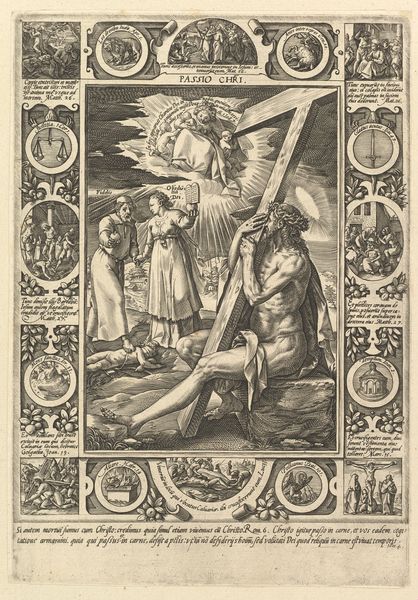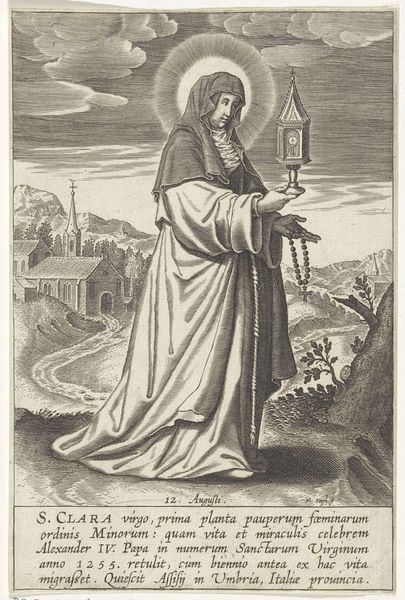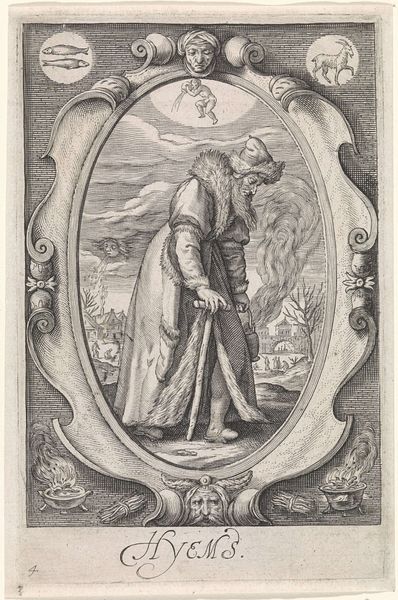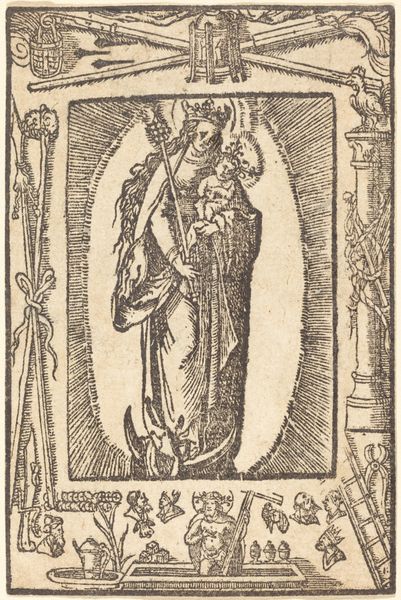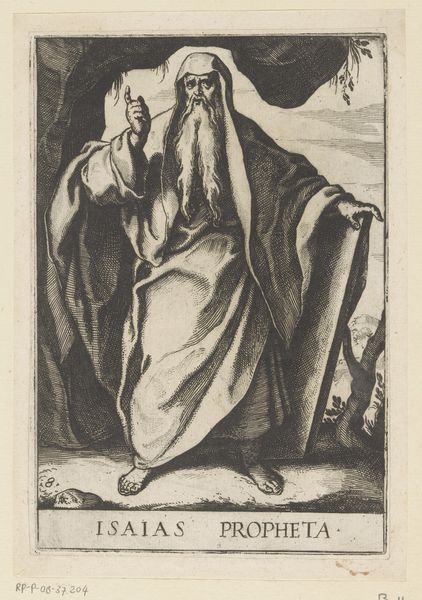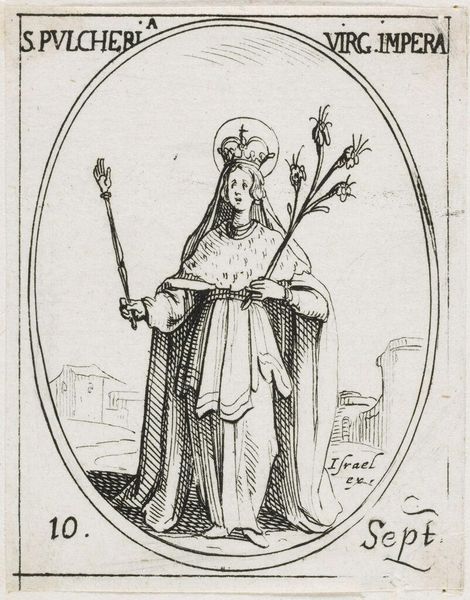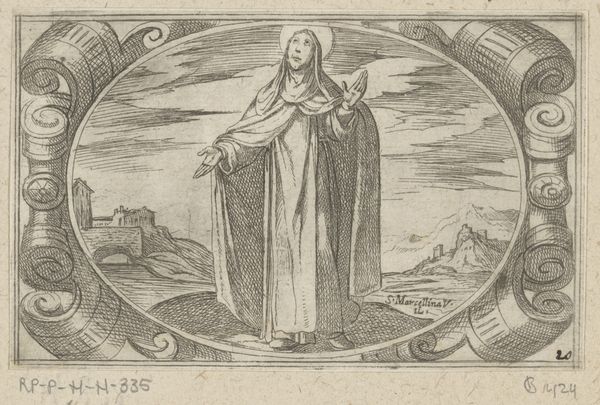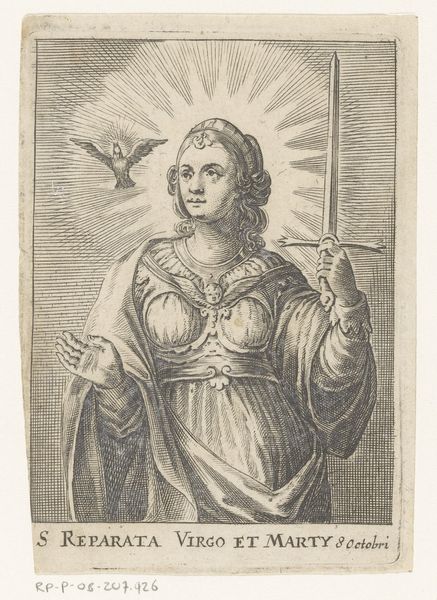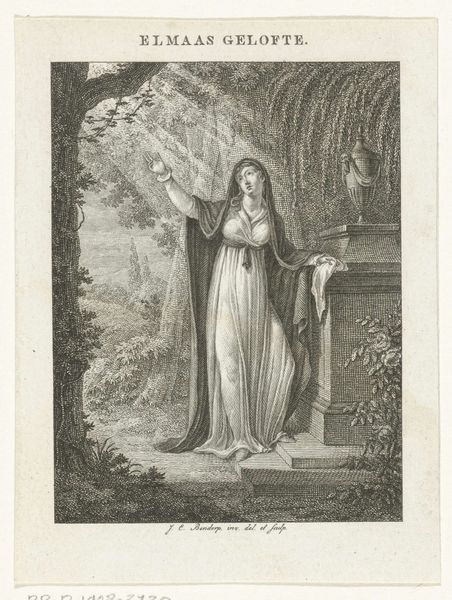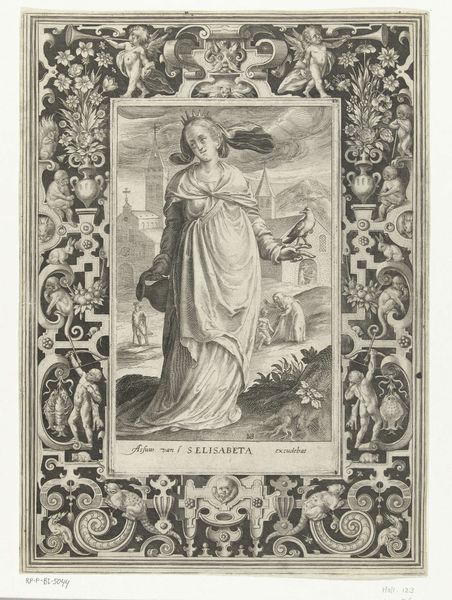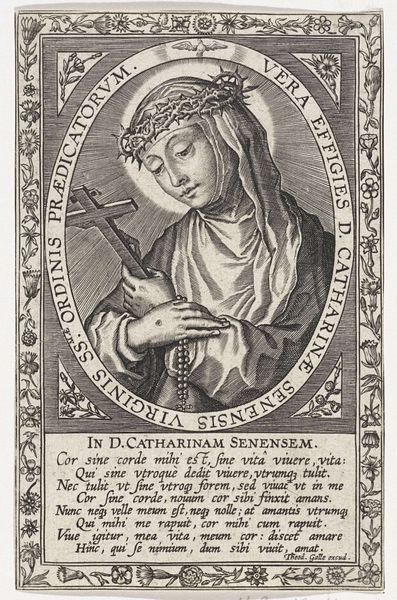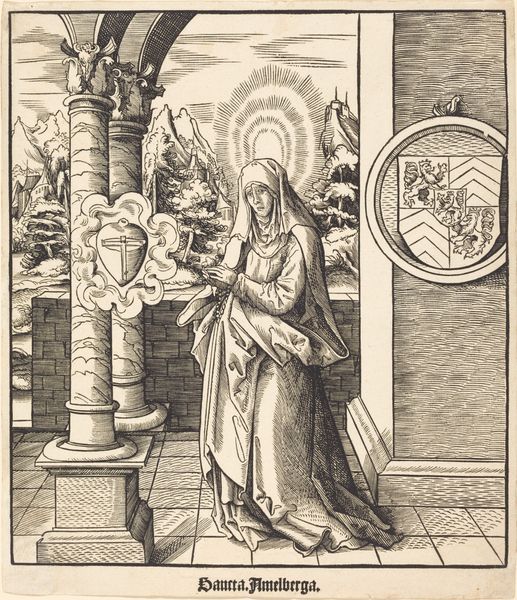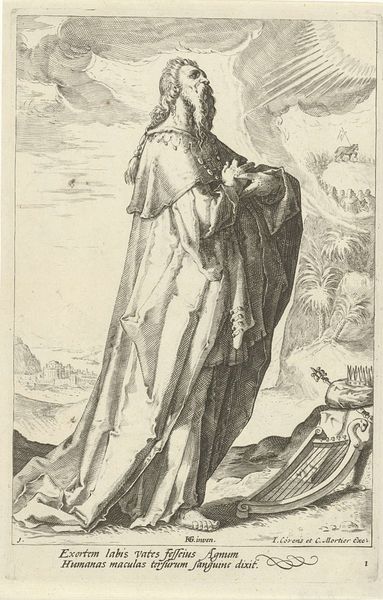
Heilige Helena met het Ware Kruis in omlijsting met ornamenten 1581 - 1656
0:00
0:00
nicolaesdebruyn
Rijksmuseum
print, engraving
#
portrait
#
pen drawing
# print
#
mannerism
#
line
#
engraving
Dimensions: height 188 mm, width 113 mm, height 291 mm, width 211 mm
Copyright: Rijks Museum: Open Domain
Curator: The print before us is entitled “Heilige Helena met het Ware Kruis in omlijsting met ornamenten,” placing Saint Helena and the True Cross within an ornamental frame. It’s attributed to Nicolaes de Bruyn and dates roughly between 1581 and 1656. The work resides here in the Rijksmuseum. Editor: My first impression is of immense detail! The elaborate frame practically overwhelms the central image of Saint Helena. The linear complexity is quite captivating, and almost labyrinthine to explore with the eye. Curator: Indeed, that intense visual patterning carries symbolic weight. Look closely at that framework: serpents, skulls, stylized foliage – it’s a memento mori, a reminder of mortality. In conjunction with Helena holding the cross, we are reminded that salvation triumphs over death. This visual vocabulary evokes centuries of Christian thought and collective memory. Editor: I agree. And technically, that density is impressive; however, the engraving style appears to flatten the space. This creates a tension between the ostensible depth of the landscape behind Saint Helena and the two-dimensional ornamental frame that surrounds her. Note the strong verticals of the cross mirroring the implied verticality of the distant church tower. Curator: Consider Helena's steady gaze and the solemn presentation of the True Cross. Here is the Roman Empress, mother of Constantine the Great, credited with discovering the relics of the Passion. She bridges the earthly and divine realms and becomes a potent symbol of faith and imperial power. The print likely served to bolster both, in an era of religious reformation. Editor: See how the artist uses contrasting line weights to give Helena prominence. There are heavier, darker lines delineating her figure, separating it slightly from the more lightly rendered background scene. That use of value also draws the eye upward towards the delicate patternwork of her crown and headdress, creating focal points within the already busy composition. Curator: What I find compelling is how this piece acts as a cultural anchor. Visual traditions persist through repetition and modification. Helena’s image would have triggered deeply ingrained narratives of redemption, authority, and sacrifice. These weren’t just aesthetic choices but also culturally reinforced dogmas. Editor: Yes, looking again, it strikes me that de Bruyn successfully integrates figure and ground. Though initially overwhelming, the visual complexity ultimately guides the eye, revealing layer upon layer of meaning contained within its tightly rendered composition. Curator: For me, considering the historical function of these images opens another dimension to their understanding. It adds to the technical finesse, to the narrative force these forms might once have carried. Editor: A keen reminder that form never exists in isolation but is always a conduit for ideas, history, and culture.
Comments
No comments
Be the first to comment and join the conversation on the ultimate creative platform.
